The life and death struggle between the Portuguese and the Dutch in Cochin.
The Dutch becomes triumphant.
The Portuguese leaves Kerala.
The Dutch starts relationship with the elder branch of royal matriarchy.

1663
The Last War to Capture Cochin
Cochin once again became the venue for the final encounter. The seas and backwaters are swarmed with warships.
It was decided on 25 October 1662 that 11 warships were to be sent to Malabar from Batavia under the commandership of Jacob Hutsart and Peter du Reedu. The first batch of the fleet, reaching Pallipuram, started lining up cannons.

More troops arrived from Ceylon under the captainship of Van Goens to help the Dutch force which later moved to Vaipin islands. The Raja of Purakkad, in the meanwhile, came over with Nair soldiers to help the Portuguese. As war broke out between the forces of the Dutch and the Portuguese the people of Cochin were affrighted facing a state where anything goes at any time. There was great loss of life on both sides, especially among the Portuguese. Don Bernado, the son-in-law of Ignatious Darmentavi, the Portuguese governor lost his life. The Dutch commander of forces Major Dupen too was wounded. The Dutch troops that stormed into the fortress started to sow destruction. The atmosphere was rented with the wailing of women and children, the weeping of the wounded and the hysterical laughter of the troops and the bursts of gun fire. In the meantime the Portuguese themselves came forward with message of cease fire. Van Goens ordered.
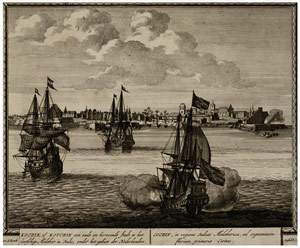
Next day bereaved of the death of his son in the war, Ignatio Sarmento, the Portuguese governor came out of the fort wearing a black cloak. He was escorted by Portuguese soldiers and he handed over the keys of the fort to the commander of Dutch forces. And thus having signed agreements between the Dutch and the Portuguese on 6 January 1663, the fort of Cochin came under their control. Along with it, the Portuguese who were holed up inside the fort went aboard ships and getting off Goa after surrendering their arms to the victor.
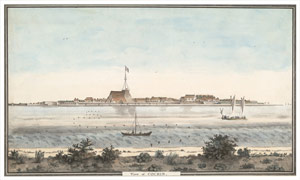
Kerala Varma's disease during his sojourn at Quilon became worsened. But as it was the time of coronation, he could not be held back and hence some officials brought him aboard using a menavu. Before reaching Cochin he had his terrestrial exit along with his dreams of throne and crown. The Dutch saw another Kerala Verma travelling along with him in the ship belonging to the branch of Elder Matriarchy of royalty, as the heir of the throne and he was brought to Cochin.
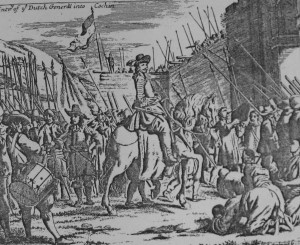
As Cochin was within the possession of the Dutch, the Zamorin raised claims for Cranganore and it was handed over to him in accordance with the prior decision. The Dutch chiefs also took steps for sending emissaries to Purakkad and troops for capturing the fort of Cannannore from the Portuguese under the leadership of Jacob Hutstaart. Then there took place the coronation ceremony of the king for which purpose a gold crown marked with the emblem of the Dutch East India Company and a pedestal were made. On the day of coronation, the Dutch came over the venue with festivity. It was Van Goens himself who placed on the head of the king -designate the crown after having him seated on the pedestal. Then the atmosphere was rented with the bursts of fire from gun salutes and hurraying. After the coronation, the King of Cochin escorted by his entourage signed agreements with the Dutch. The preamble of the agreement reads 'Admiral Riclaff Van Goens deputed by the governor general of Batavia and the King of Cochin, Veera Kerala Swaroopam of Elder branch of royal Matriarchy and his descendants sign over the abiding Agreement'.
The agreement having 17 articles helped the Dutch to control the rule of Cochin and extending their sway in different parts of Kerala. And thus the Dutch who came from Europe is going to be the paramount power of Kerala pushing back the Portuguese.
Description of Cochin by Nieuhoff.
News reached the Netherlands that Cochin became dependant with a Dutch governor and commissioners.
The Dutch starts their rule in Cochin.

1663
The Dutch Starts Their Administration in Cochin
The town, the Portuguese called as Cochin, was, as a rule, known as Kakkochi. Some historians are of the view that there were two Cochins. Of the two, one was Upper Cochin called as Daseema by the Portuguese. This name is on account of the fact that it is above the river. The Dutch called it as Malabar Cochin. It was where the king resided. Near the royal palace, the place was crowded with big houses and temples. The New Cochin is located a little away from the sea by the face of the river. It was a dependency to the Portuguese for long time. There was a fort around it made up of stones and sea wall too was constructed by the side of the river. There were beautiful palaces and monasteries there.
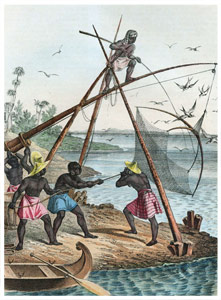
This is the description of Cochin recorded by Nieuhoff. As the news of the conquer reached the Netherlands, the Batavia Supreme Council, in accordance with the instructions from the home government, appointed an administrative body for the administration of Cochin. While Ludolf Colster was the new governor, Peter de Bitter and Charles Valker Burg were the Commissioners. Orders were issued that the British East India Company should remove their factory at Cochin.
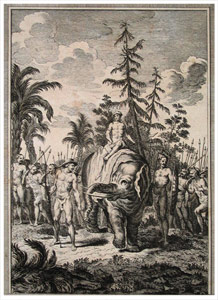
Public notice was issued that the people of Cochin could enjoy the things that they had in tune with their likes but no taxation is to be imposed without the permission of the king of Netherlands. Steps were afoot to transform Cochin into the administrative centre of Malabar. As part of reducing administrative costs, actions were initiated to reduce the size and structure of the forts and palaces. Churches used by the Portuguese were started to be demolished. In the same way Portuguese names were replaced by Dutch names. While the Church of Francis was transformed in to a Protestant one, the church of Santa Cruz was metamorphosed into a store house of spices and sugar. Though initially the Dutch was severe and harsh against the laity and priests belonging to the Roman Catholic Church, there was a U-turn in that approach in later days. The Roman Catholics were given permission to take the materials from the fort to the islands of Vaipin to construct a new church.
Lord Gotha Verma and his followers, who lost power, became refugees in Venad.
Paliath Achan became the minister in Cochin. Later there was stipulation that on important matters, decision should be taken only after consulting with the King and Dutch governor.